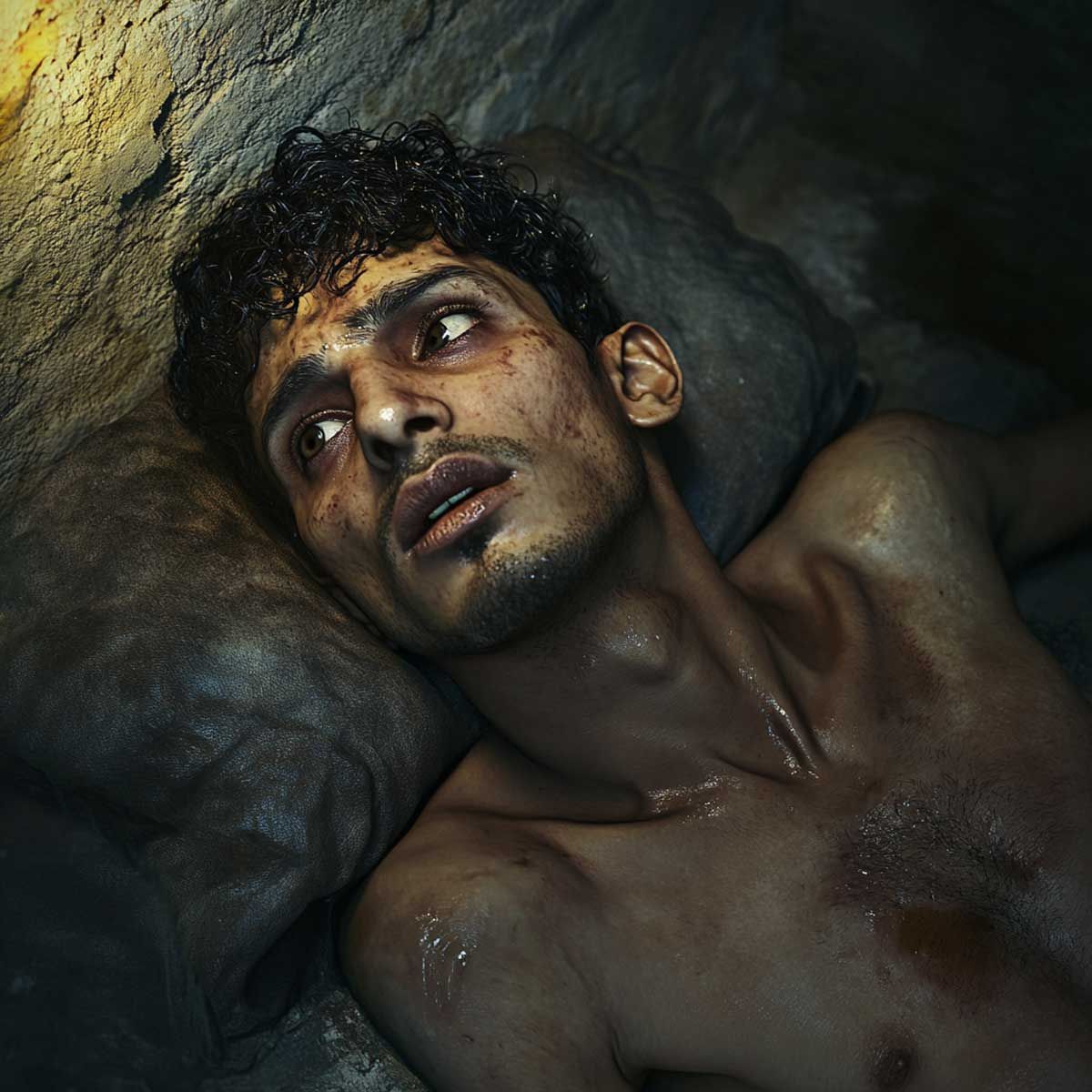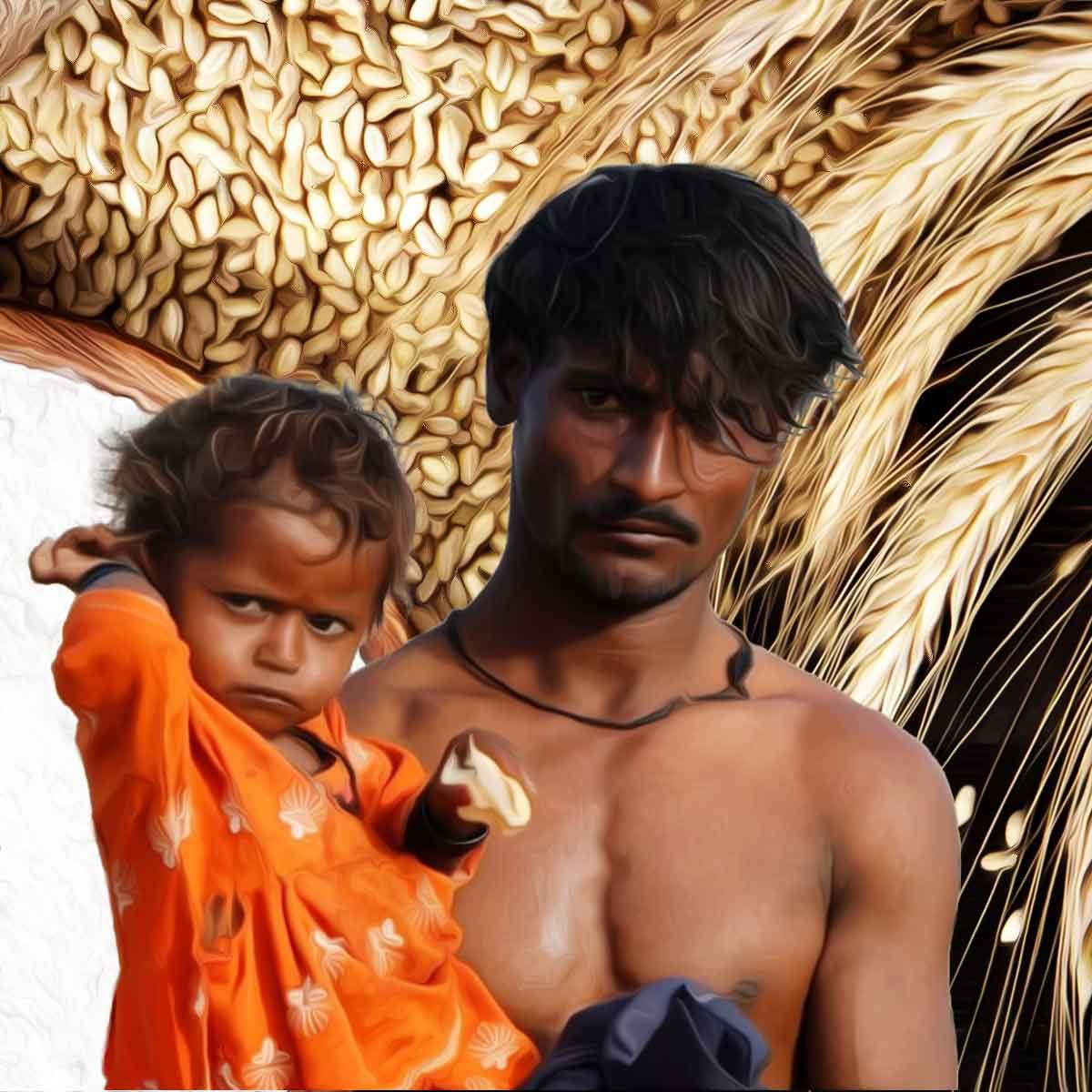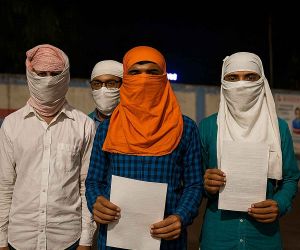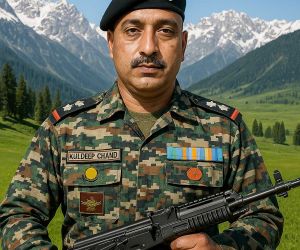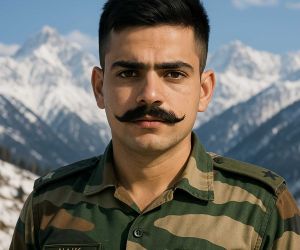MORE COVERAGE
Twitter Coverage
Satyaagrah
Written on
Satyaagrah
Written on
Satyaagrah
Written on
Satyaagrah
Written on
Satyaagrah
Written on
JOIN SATYAAGRAH SOCIAL MEDIA
"Respect is earned, not given": Italy unveils unique memorial to honour valour & sacrifice of Indian soldiers during World War II for their significant role in liberating Italy, and the enduring gratitude and respect in the hearts of the Italian populace

Recognizing the valor, bravery, and immense sacrifice made by Indian soldiers during the Second World War, Italy has dedicated a distinctive memorial in their honour. This tribute comes in the form of a living sundial - an awe-inspiring symbol of time's relentless march, reminding us of the eternal impact of their sacrifice. This remarkable monument, named the 'V C Yeshwant Ghadge Sundial Memorial,' has been unveiled at Montone in Perugia.
|
The community of Montone, along with Italian military historians, has been pivotal in bringing this memorial to life. The monument not only commemorates the bravery of the Indian troops who fought valiantly during the Italian campaign in World War II, but it also honours Naik Yeshwant Ghadge, a recipient of the prestigious Victoria Cross. Ghadge made the ultimate sacrifice while engaging the enemy on the heights of the Upper Tiber Valley.
The unveiling ceremony was a poignant event attended by a host of dignitaries and locals alike. Representing India were Ambassador Neena Malhotra and the Indian Defence Attache. A large number of Italian citizens, distinguished guests, and members of Italian armed forces also turned up, reflecting the deep respect Italy harbours for these brave Indian soldiers.
The Indian Army's contribution during the Italian Campaign of the Second World War was monumental. More than 50,000 Indian Army soldiers from the 4th, 8th, and 10th Divisions took part in this challenging operation. Their bravery was such that, of the 20 Victoria Crosses awarded in Italy, six went to Indian soldiers. These commendations, however, came at a high price. The Indian soldiers faced a staggering 23,722 casualties during the campaign. Of these, 5,782 soldiers laid down their lives for the cause of freedom. These fallen heroes are commemorated in 40 Commonwealth War Graves scattered throughout Italy, a solemn reminder of the high price of peace.
To ensure this memorial is participative and includes all those who served, a plaque from the Indian Army has been placed at the memorial site. It commemorates the gallant sacrifices of all ranks of the Indian Army who fought in the Italian Campaign. The motto of the memorial is ‘Omines Sub Eodem Sole’, which translates in English as "We all live under the same sun". This powerful message embodies the common spirit of humanity that binds us all, regardless of nationality or creed.
The inauguration of this memorial is a strong testament to the respect and honour that Italy holds for the brave Indian soldiers. Their supreme sacrifices and contributions during the Italian Campaign of the Second World War are held in high esteem, remembered with gratitude, and will continue to be commemorated in the heart of Italy, serving as an enduring symbol of their selfless sacrifice and timeless courage.
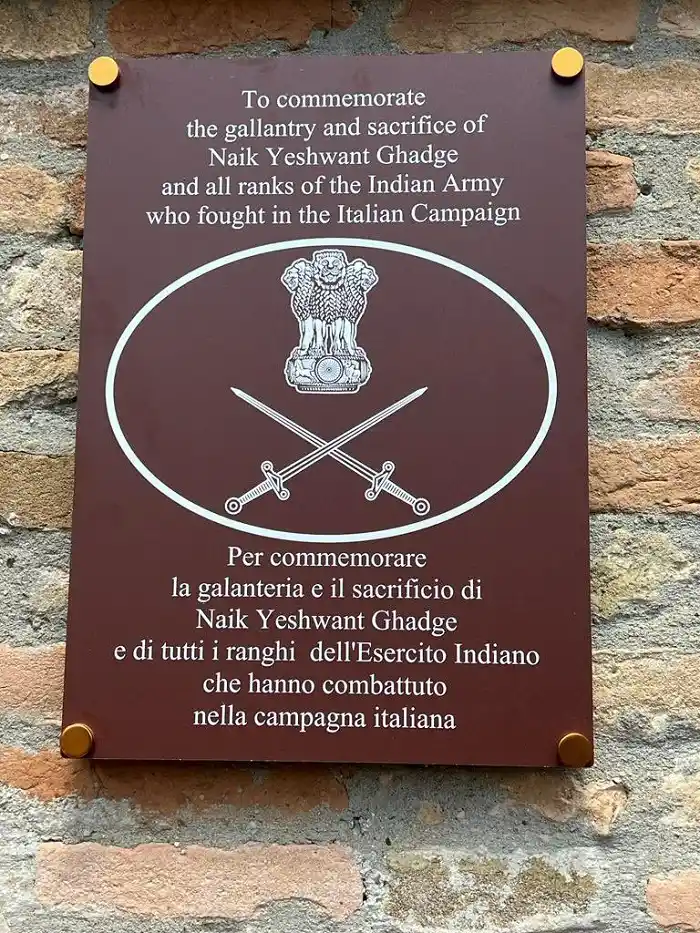 |
Italians are grateful to Indian soldiers who had helped them in World War II
There's a profound sense of gratitude in Italy for the Indian soldiers who courageously fought on their side in World War II. This narrative, steeped in emotions and national pride, focuses on a solemn ceremony organized in the small city of Prato, which is located near Florence, Italy. The event took place on the 29th of May, 2019. It was organized to pay homage to the exceptional bravery and significant sacrifices made by two Indian soldiers, namely Hari Singh and Palu Ram from the Indian Army, during the globally significant conflict that was World War II.
|
An astounding figure of almost 50,000 Indian soldiers, most of whom were young men aged between 19 to 22, took part in the campaign for the liberation of Italy during the Second World War. The first wave of these Indian troops made their landing at a location known as Taranto, situated south of Naples, on the 19th of September, 1943. From that day until the 29th of April, 1945, they participated valiantly in the fight against the fascist forces to liberate Italy, with 5,782 making the ultimate sacrifice for this cause. Amongst these brave souls, six distinguished soldiers were bestowed with the esteemed Victoria Cross. These exceptional individuals include Sepoy Kamal Ram, from 3/8 Punjab, N.K. Yashwant Ghadge (posthumously) from 3/5 Maratha Light Infantry, Sepoy Namdeo Jadhav from 1/5 Maratha Light Infantry, Rifleman Sher Bahadur Thapa from 1/9 Gorkha Rifles, Rifleman Thaman Gurung (posthumously) from 5 Gorkha Rifles and Sepoy Hyder Ali from 6/13 Frontier Force Rifles. Their courage and commitment were unmatched, and their heroic feats are still held in high regard today.
|
The tales of their bravery and immense sacrifice remain a topic of discussion and admiration in various Italian cities and villages that these soldiers played a crucial role in liberating. Several instances bear witness to the heroism of Indian soldiers, such as the battles at Monte Cassino, Sangro River, Liri Valley, the east coast to Bologna, the crossing of the Senio River and the battle of Gothic lines. The key cemeteries where these valiant soldiers are interred include Arezzo, Sangro, Cassino, Forli Indian Army War Cemetery, and Rimini Gurkha War Cemetery. Cities such as Perugia, Luca, Florence, San Marino, Cesena, Forli, Ferrara and Bologna, among others, owe their freedom to the heroism and sacrifice of these Indian soldiers.
In a rather touching event, the skeletal remains of two individuals were discovered near Florence in 1996. These remains, found in the Indian area of the battlefield at Poggio Alto near Montale (Florence), were exhumed and examined by a team of doctors. Based on the examination of the date of death, location of the remains, anthropometric and morphological analysis, findings from the boots worn and the ammunition used, the researchers matched the Commonwealth records of missing soldiers. This information helped them to ascertain that these were indeed the remains of Hari Singh and Palu Ram of the 4/13 Frontier Force Rifles. Their respective service documents were located in the Army records kept at the National Archives of India. The details such as height provided in these records were instrumental in the successful identification of the remains. The remains of the soldiers were cremated in a dignified manner.
The ceremony for the presentation of the urns containing the remains of these brave soldiers was conducted on May 29, 2019, at Public Assistance, Prato (Florence). The ceremony saw a significant presence from the community of Prato and the Italian Armed Forces. The attendees included the mayor, the president of Public Assistance and the prefect of Prato. Other attendees included representatives of the Commonwealth War Graves Commission, the Red Cross Society, and other notable dignitaries of Prato. The Indian side was represented by Reenat Sandhu, the Indian ambassador, and Colonel Rohit Teotia, the defense attache to Italy. Sixteen senior officers from the National Defence College course in India, who were on a study tour in Italy, also attended the ceremony. The ceremony was conducted with due military honors, and the urns containing the ashes of the soldiers were handed over by the Italian authorities to the Indian side. These were then handed over to the custody of the Commonwealth War Graves Commission. The ashes of these two soldiers will be scattered on July 16, 2019, in the Forli War Cemetery where other comrades from that battlefield have also been commemorated.
|
Back in October 2007, as a rare and heartwarming gesture, a solemn ceremony was held at Cassino for the first time since 1945. The ceremony was to pay tribute and honor the memories of the 5,782 Indian soldiers who had bravely fought and lost their lives. This event was attended by a host of notable figures including the Indian ambassador to Italy, Rajiv Dogra, the deputy defence minister of Italy, Emidio Casula, the mayor of Cassino, Bruno Scittarelli, ambassadors from several countries, and senior generals of the Italian Army and the Indian Army.
The location of the ceremony, Monte Cassino, holds a significant place in this historical narrative. It was the site of one of the most intense battles of the Italian campaign on the Gothic Line of Defence of the German Army. Reflecting on this brutal battle, Italy’s Army Chief, Gen. Fabrizio Castagnetti, made an important remark: “The fourth, eighth and tenth Indian Infantry Divisions were employed in the battle for the capture of Monte Cassino and in the bitter campaign that followed for the breaching of the Gothic Line.” Field Marshal Wavell added, “The fame of this (Fourth) Division as one of the greatest fighting formations will be remembered in military history, just like the Tenth Legion, the Light Division who fought in the Peninsular War and the old Napoleonic Guard.” Deputy defence minister Emidio Casula, during his speech, recalled the sacrifices of the Indian soldiers and highlighted how they were still remembered for their discipline, courage, and camaraderie. The Italian Army paid special tribute to these young Indian soldiers by arranging a Guard of Honour, signifying the deep respect they held for their role in the liberation of Italy.
Another poignant story of the Italians' tribute to Indian soldiers is narrated by Captain Raj Mohindra (Retired), Indian Navy. He recounts the surprising and heartfelt welcome they received in the city of Taranto due to the city's historical association with India. In 1967, he was serving onboard INS Brahmaputra. The ship was rerouted to Taranto due to a political coup against King Constantine in Greece. Upon reaching Taranto, they found a large gathering of local residents, including many senior citizens, waiting to welcome them. The news of their arrival was announced on local radio, which led to an even larger crowd gathering to greet them. Many held placards inviting the Indian crew for dinners, lunches, and picnics.
|
During a dinner hosted by the family of the late Ines Ghosh, the Italian wife of the late Surgeon Rear Admiral J.N. Ghosh of the Indian Navy, it was shared how the Indian soldiers had come to the rescue of Taranto. They were the first to land in the city, and they helped liberate it from the oppressive fascist regime. The people of Taranto had such fond memories of the Indian soldiers that when they saw the Indian Navy crew nearly two decades later, they welcomed them as if they were their liberators returning.
These stories of bravery and sacrifice by the Indian soldiers and the gratitude shown by the Italian people are an important reminder of the deep ties and shared history between the two countries. As we look back on the events of World War II, we must honor those who fought bravely for the liberation of countries far from their own homes and remember the friendships and alliances that were forged in the crucible of war.
Despite the vast geographical distance and distinct cultural differences, the acts of these brave Indian soldiers have left an indelible imprint on the heart and soul of Italy. These are tales of extraordinary courage and friendship that continue to be retold, evoking feelings of deep gratitude and admiration amongst the Italian populace.
|
To this day, every year, there is a remembrance ceremony held in Monte Cassino, Italy, to commemorate the bravery and sacrifice of Indian soldiers. The local communities come together to pay their respects and lay wreaths at the memorials of these brave souls. The efforts of these soldiers, their commitment to their duty, and their ultimate sacrifice in the line of duty will forever be a part of Italy's history.
The story of these Indian soldiers is a testament to the universal values of bravery, honor, and commitment to duty. It is a story that continues to inspire and remind us all of the shared human capacity for courage and resilience in the face of adversity.
 Support Us
Support Us
Satyagraha was born from the heart of our land, with an undying aim to unveil the true essence of Bharat. It seeks to illuminate the hidden tales of our valiant freedom fighters and the rich chronicles that haven't yet sung their complete melody in the mainstream.
While platforms like NDTV and 'The Wire' effortlessly garner funds under the banner of safeguarding democracy, we at Satyagraha walk a different path. Our strength and resonance come from you. In this journey to weave a stronger Bharat, every little contribution amplifies our voice. Let's come together, contribute as you can, and champion the true spirit of our nation.
 |  |  |
| ICICI Bank of Satyaagrah | Razorpay Bank of Satyaagrah | PayPal Bank of Satyaagrah - For International Payments |
If all above doesn't work, then try the LINK below:
Please share the article on other platforms
DISCLAIMER: The author is solely responsible for the views expressed in this article. The author carries the responsibility for citing and/or licensing of images utilized within the text. The website also frequently uses non-commercial images for representational purposes only in line with the article. We are not responsible for the authenticity of such images. If some images have a copyright issue, we request the person/entity to contact us at This email address is being protected from spambots. You need JavaScript enabled to view it. and we will take the necessary actions to resolve the issue.
Related Articles
- A Different 9/11: How Vivekananda Won Americans’ Hearts and Minds
- Jagannath Temple administration issues clarification on proposed sale of temple lands
- An Artisan Heritage Crafts Village: Indigenous Sustainability of Raghurajpur
- A new symbol of Hindutva pride, Shri Kashi Vishwanath Temple Corridor
- The forgotten temple village of Bharat: Maluti
- Paramahansa Yogananda: Spiritual journey of a saint who was known as The Father of Yoga in the West
- A major boost to India’s defence system, the Philippines has accepted BrahMos Aerospace Pvt Ltd’s proposal worth USD 374.9 million: India’s proposal to supply Brahmos anti-ship Missile System gets green signal
- Taimur was attacked and defeated by 20 year old Rampyari Gurjar and her army of 40,000 women
- Hero of Pawankhind: Veer Maratha Bajiprabhu Deshpande, who led 300 Soldiers against 12000 Adilshahi Army defending Shivaji
- Gandhi emphasized that he won't salute Indian National Flag if Charkha is replaced by Ashoka Chakra and wanted British flag added to it
- Narasimha Rao govt brought places of Worship Act as a hurdle in reclaiming ancient Hindu heritage destroyed by Muslim invaders
- Birsa Munda: The tribal folk hero who was God to his people by the age of 25
- The Lost City of Dwarka and step-motherly treatment to it's Archaeological excavations as revealed by RTI: Shocking state of neglect for Hindu sites by the Government
- In a historical move ahead of Republic Day on January 26th, the Amar Jawan Jyoti flame at the India Gate would be merged with the flame at the National War Memorial on Friday
- World’s highest tunnel to be built by BRO to connect Himachal Pradesh and Zanskar valley in Union Territory of Ladakh; will ease movement of the Indian Army vehicles: Director-General of BRO, Lt Gen Rajeev Chaudhary






